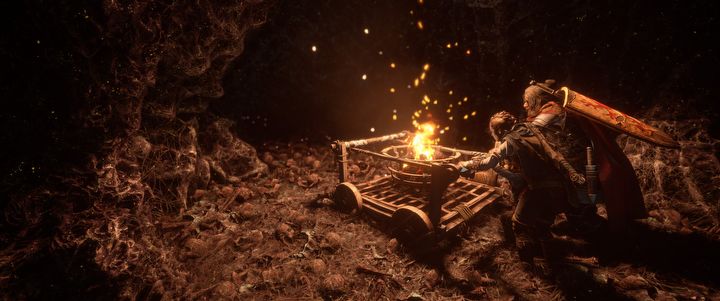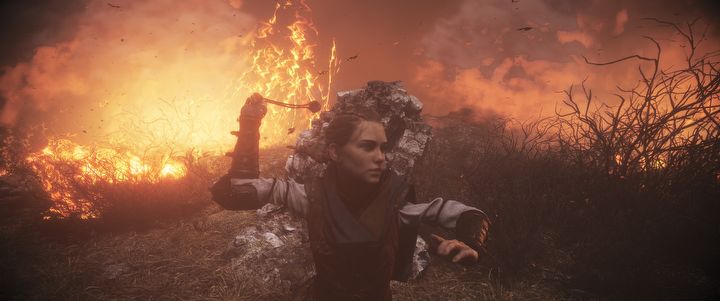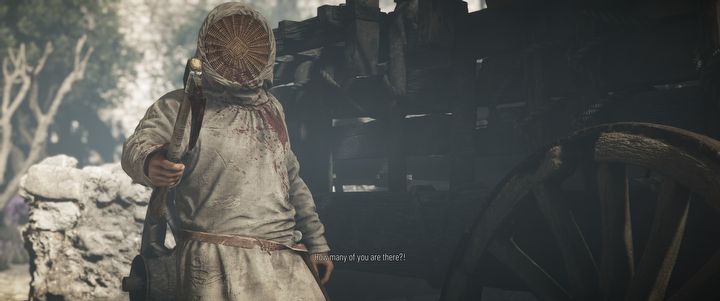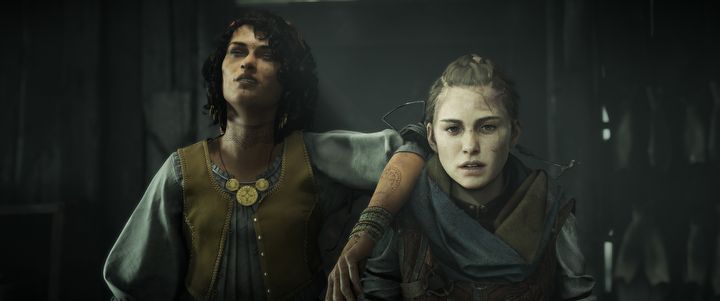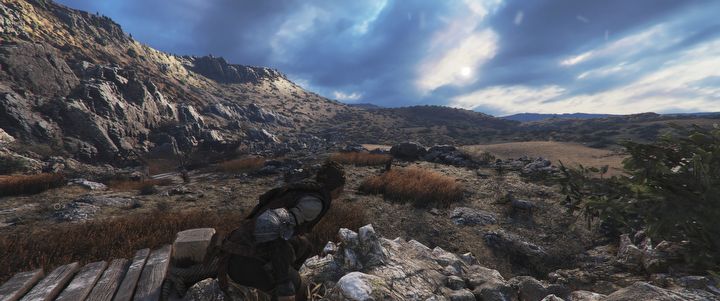Plague Tale Requiem is the Reason Why I Still Play Games - Review
A Plague Tale Requiem is one of the best games of 2022, and it undoubtedly offers a very relevant critique of the realities we've found ourselves in. Wear your masks, because we're entering a highly contagious plague of rats.
The review is based on the PC version. It's also relevant to PS5, XSX version(s).
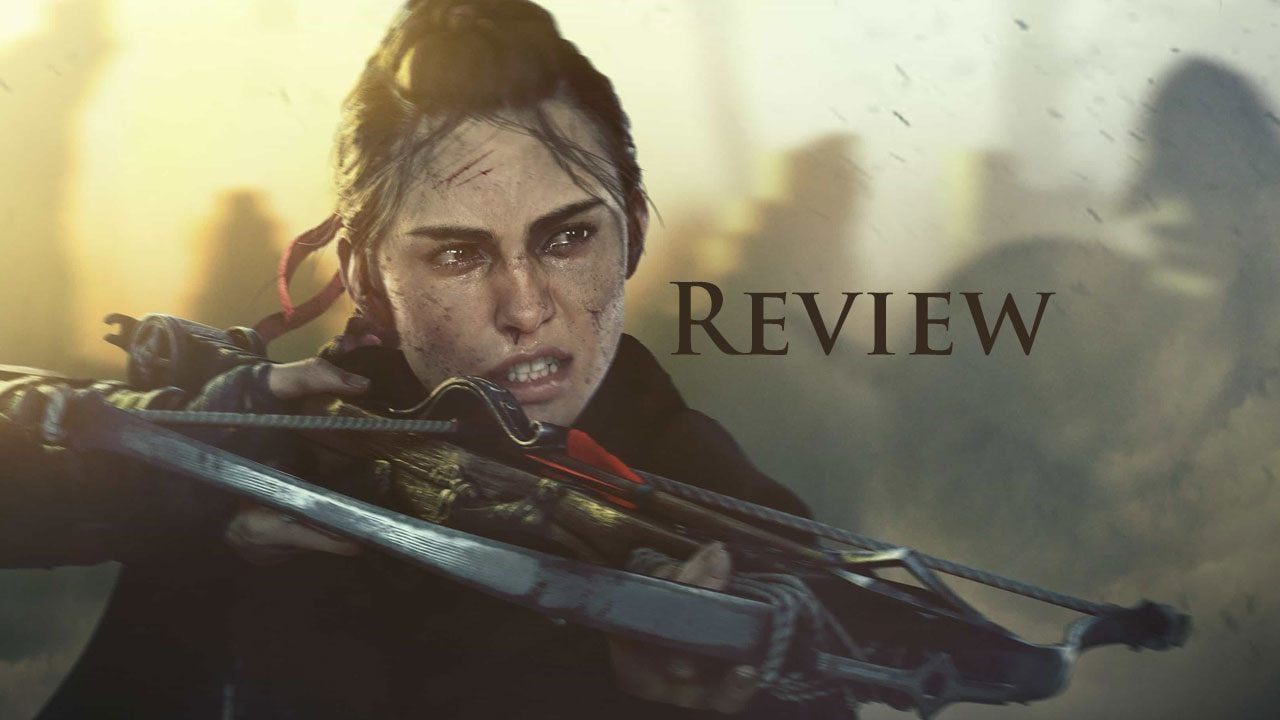
I first heard about A Plague Tale at the beginning of 2018. I was in Paris on a visit to Focus Home Entertainment (now simply: Focus Entertainment), where I met Kevin Choteau, the main creator of A Plague Tale: Innocence, the original. I saw the first presentation of the adventures of Amicia and Hugo and was speechless and delighted, then spoke to Kevin for a while, asking about the visible inspirations with The Last of Us. It was a completely different time – no one had heard about COVID, there was no war in Europe, and masks were only worn in winter by people afraid of smog. 4 years have passed since, and the world has changed a lot.
For at least a year, I haven't been able to find a game for myself that really touched me. I even thought that games just didn't interest me anymore, and that's a pretty sad conclusion for someone who makes a living writing about games. When I finished A Plague Tale Requiem one night, I went out into the street for a cigarette. I stood there, smoking, trying to understand what had happened. It was one or two in the morning, the moon was high, and I stood silently on the street, staring at the sky.
- Olivier Deliviere's music (again!) is a goddamn miracle;
- Levels are much more extensive and the game itself more beautiful;
- The plot is as emotional as the best novels;
- Supporting characters were well-written, entertaining and helpful;
- Lots of improvements in mechanics, crafting.
- The art is great, some scenes are incredibly memorable;
- The New Game + allows collecting the remaining achievements and trophies.
- Optimization – both PCs and consoles tend to stutter;
- Broken photo mode;
- Common bugs.
At the same time, I realized how badly I needed a game with a good, captivating story – one that would leave me speechless with all the emotions. A game that is not silent, that speaks, whispers, communicates, screams or yells. A Plague Tale: Requiem is just such a game – it takes your breath away and leaves you staring at the sky. This is one of the best games in 2022, but also, undoubtedly, the most relevant in terms of the subjects it covers.
I am writing about it because it's hard not to look at A Plague Tale: Requiem as a game separated from the vile and sad contexts that have defined our contemporary world. A Plague Tale deals with the subjects of lost people amid plague and war – subjects that have become part of our daily lives in recent years and months. It does this by placing the characters in a story told through the prism of fantasy, which allows it to avoid moralizing. Perhaps A Plague Tale is the most up-to-date and relevant critique on our reality in video games. And at the same time, the sequel – forgetting about the context – is just a great sequel and a really good game.
Black plague
In A Plague Tale Requiem, we once again play as Amicia, as she looks after her brother Hugo. The events of the two begin one year after the events of Innocence. The world has risen after the plague of rats (which is a reference to The Plague of 1347-1353), and the main characters are on their way to an ancient order of alchemists that Hugo is supposed to cure. Hugo is the carrier of Prima Macul – an immense, evil force that can destroy the world by sending a plague of rats upon it. And although the crisis from the first part seems to have been overcome, with the Inquisition giving up the pursuit, the problems encountered along the way and the aggressive people quickly remind him of his difficult legacy. The plague returns, the rats are swarming the cities, and we have to flee once again.
As in the first part, the creators start things off with a charming idyll and fun, and soon throw us into the middle of a massacre; guts, piles of bodies, purges, violence and human tragedy. The story told in Requiem is gaining momentum every step of the way – we meet our companions and enemies on the way again, and the creators don't shy away from strong emotions again. Asobo Studio is trying to tell us something – the game is one of those few titles, in which the touching story – for some perhaps even devastating – carries a philosophical and moral message. Some of the questions we're asked are: are humans inherently evil? Are we able to break the never ending spiral of violence? Are we already damned? A Plague Tale is a game sewn from depression, meanness, villainy, ugliness, disease and death, but it is also a game about love, friendship, sacrifice, family and life. The contrast of these topics and the game's aesthetics can baffle.
David got some new toys in the fight against Goliath
Before playing, I expected the creators would focus on extending the storyline and storytelling, while the mechanics of stealth, exploration and combat would remain similar. And I was not wrong, although I also must admit that almost every aspect of the original's solutions has been extended here. It's still a stealth game that sometimes turns into a desperate fight for survival, but Amicia now has some new toys that she can use to confuse her opponents, including rats. Crafting based on medieval alchemy returns again – from the novelties, it is worth mentioning the tar, which can be used to make fire on torches or bonfires light up with more power for a few seconds (chasing rats further behind or blinding soldiers), or the possibility of filling up the vessels known from the first part, which in Requiem can be filled with any substance – fire, tar, Extinguis (to extinguish fire and stun opponents) or Odoris (to attract rats). In this way, we can create ponds of fire, burn soldiers, or direct a swarm of rats out of our way temporarily.
A Plague Tale deals with the subjects of lost people amid plague and war – subjects that have become part of our daily lives in recent years and months. It does this by placing the characters in a story told through the prism of fantasy, which allows it to avoid moralizing. Perhaps A Plague Tale is the most up-to-date and relevant critique on our reality in video games. And at the same time, the sequel – forgetting about the context – is just a great sequel and a really good game.
Amicia is no longer a child. After the events of the original, she had to grow up faster. So, in part two, we play as a young woman – stronger, more agile and definitely more dangerous than before. Amicia now can, for example, strangle careless sentries. Following the example of The Last of Us, we can also find knives around the levels and use them in case of direct combat; eventually, we even get a crossbow that can be used to get rid of a few soldiers. But A Plague Tale isn't an action game, so strangling opponents is loud and attracts the attention of bystanders, and it's worth holding onto the knives, as they allow us to open the rare resource cabinets (these are a type of secret reward, similar to the alchemist's carts from part one).
When it comes to combat, then, compared to A Plague Tale: Innocence, it is much more difficult. Amicia, though more agile and dangerous, is still unable to win a duel even with soldiers with minimal armament, and she can only take two hits. There are more enemies and most of them are armored. This means that we cannot use the slingshot to take them down en-masse like in part one. They are also definitely more perceptive and can see us from a really long distance (especially the archers). Hence, the game prioritizes stealth over confrontation.
Interestingly, even if sneaking is our first instinct, be prepared to repeatedly witness Amicia's death. The levels are designed in such a way that it takes us a moment to pass them – they are not only much larger. Usually, they also have several paths that can lead to the goal, and those who wish to explore all of them (for example, to find all the collectibles, which also are much more difficult to find in this part) will die even more frequently.
The character development system has also undergone changes. We're still improving the inventory and collecting materials hidden around the maps, but on top of that, passive skills that become more powerful as we use them were also added. So, if we sneak a lot, the "Prudence" bar will increase, making Amicia quieter. If, on the other hand, we kill enemies in a more direct way often, the "Agressive" bar will increase, which in turn will allow e.g. faster recovery after being knocked down.
Friends in need
Amicia is almost never alone – she's usually accompanied by one of the NPCs, who were all really well designed for this part – each of them has character and we quickly start to like them. They also have unique abilities. And so, Sophie the pirate has a prism, which will help us pass through the ravaged locations unscathed, and Arnaud is a warrior who can be ordered to eliminate even the most heavily armored opponents.
Hugo deserves his own paragraph, as he is the person that already in part one wielded some really mighty powers. And here, too, we will use the supernatural abilities of our little brother – he can now sense enemies at distances (which activates a 'wallhack'), as well as take control of little rat helpers. This allows us to see the world from the perspective of the rats, with the ability to direct it in such a way as to eliminate opponents beyond the reach of the light. However, we are not able to use this power all the time – each use fills a bar, and when we reach a critical value, the area is flooded by rats, making it much more difficult for us to complete the level.
The meadows are beautiful, rats or not
The levels, as already mentioned, are much extensive, not only in length, but also in volume. It's still not an open-world game (although one of the later maps looks strongly evokes this feeling), but compared to the first part – which was extremely linear even when we were passing through vast battlefields – the levels feel huge. This impression is amplified by the collectibles that are really difficult to find and the many chests with resources that tempt you and encourage to take risks. I have died countless times in Requiem just because I wanted to find out what was behind a corner.
The vastness of the levels is something I didn't really expect at all to be honest. I thought Requiem would be a rehearse of the first game, and it actually turned out to have enough of, so to speak, own identity. But the creators really wanted us to loudly go "WOW." The very views, be it beautiful, flowery meadows, a mountain range, the sea, or the port at night, made me mash the screenshot button in a way reminiscent of playing Tekken. During the game, I took exactly 150 of them.
And while we're at the subject of photos – in the review version of the game, a very specific photo mode was available. To be honest, this is the first time I've encountered such a mode – one that activates -noclip at the same time. This means that you can drive the camera through walls and textures, thus going far beyond the map and seeing the game "from outside." The notion of 'noclip' came up for a reason, because the photo mode really resembles cheating – you can stop the action at any time and check if there's an opponent around the corner, lurking in the next room, or if it is worth venturing into a distant alley. You can also activate this mode during cutscenes to take beautiful photos, or... discover the errors and simplifications that are normally hidden from us in those instances. For example, at the beginning of the game, a cutscene shows us the terrified face of Hugo, who's watching people being eaten alive by rats. When you switch to the photo mode and turn the camera their way, you shall discover that these people… are, well, just rolling on the floor aimlessly without apparent reason. A few times it knocked me out of immersion so hard that I decided to restrict my own use of this mode.
The rat tsunami will eat your CPU
The creators boast that in the new game, we could see up to 300,000 individual rats on the screen. Now, I didn't count, but there are clearly many more of them. The stages in which we have to flee are especially impressive, and the waves (literally: rat tsunamis) can overturn buildings and crush walls.
I also mentioned beautiful and extensive maps – the graphics and character models themselves in the second part have definitely improved, but... well, I have the impression that Asobo Studio didn't fully stand up to the challenges of such a significant visual overhaul. I tested the game on RTX 3090 and the animation stuttered a lot. This wasn't something that could spoil the entire experience, but... A Plague Tale Requiem, despite some bells and whistles, won't be contesting the title of the most beautiful game in the world. It's appetite for processing power, on the other hand, suggests otherwise (the visuals are also a bit blurry – seriously, why's everything in this game so blurry?). I also noticed that the problem occurs on PS5, especially at times when there's a lot of fire on the screen.
Fortunately, the game has DLSS, which can help a bit – but I wonder what will happen when the developers introduce ray tracing (due on release day). If appropriate optimization isn't introduced in time, only owners of RTX 4090 will probably be able to enjoy full framerate...
Asobo Studio – a gem among the sea of rats
After A Plague Tale: Requiem, Asobo becomes one of my favorite development studios currently active. They delivered a game that, in many ways, surpassed the original, and in addition they did it way that talks a bit about what plagues us here and now, in the 21st century – all in a low-key manner, devoid of pretentious moralizing. Despite the fact that the game is set in the 14th century.
A Plague Tale Requiem and Asobo Studio have also given me a reason – and hope – to stay in this business, where experiences seem to become ever shallower, less concrete, and less emotional. But they reminded me why I play games in the first place.
It's a pity that the optimization problems have not been resolved. If I experienced such problems on RTX 3090, what will GTX 1060 users get? This game needs optimization fast – if only so that more people can enjoy its greatness.

Our reviews are featured on Metacritic.
The game has a non-obvious and bold ending, giving us a lot of food for thought. A Plague Tale Requiem is a pessimistic and gloomy game about a brutal world (in a strange way equally alien and familiar), in which even if a spark of hope still lingers somewhere, it is impossible to find it in a sea of rotten, crumbling houses, bodies eaten by plague, and dirt. And yet, it gives hope.
And the music... My dear people. The soundtrack that Olivier Deliviere delivered here deserves all the awards you can give it.
DISCLAIMER
We have received a copy of the game from Focus Entertainment – official publisher of the game.
A Plague Tale: Requiem
Plague Tale Requiem is the Reason Why I Still Play Games - Review
A Plague Tale Requiem is one of the best games of 2022, and it undoubtedly offers a very relevant critique of the realities we've found ourselves in. Wear your masks, because we're entering a highly contagious plague of rats.


